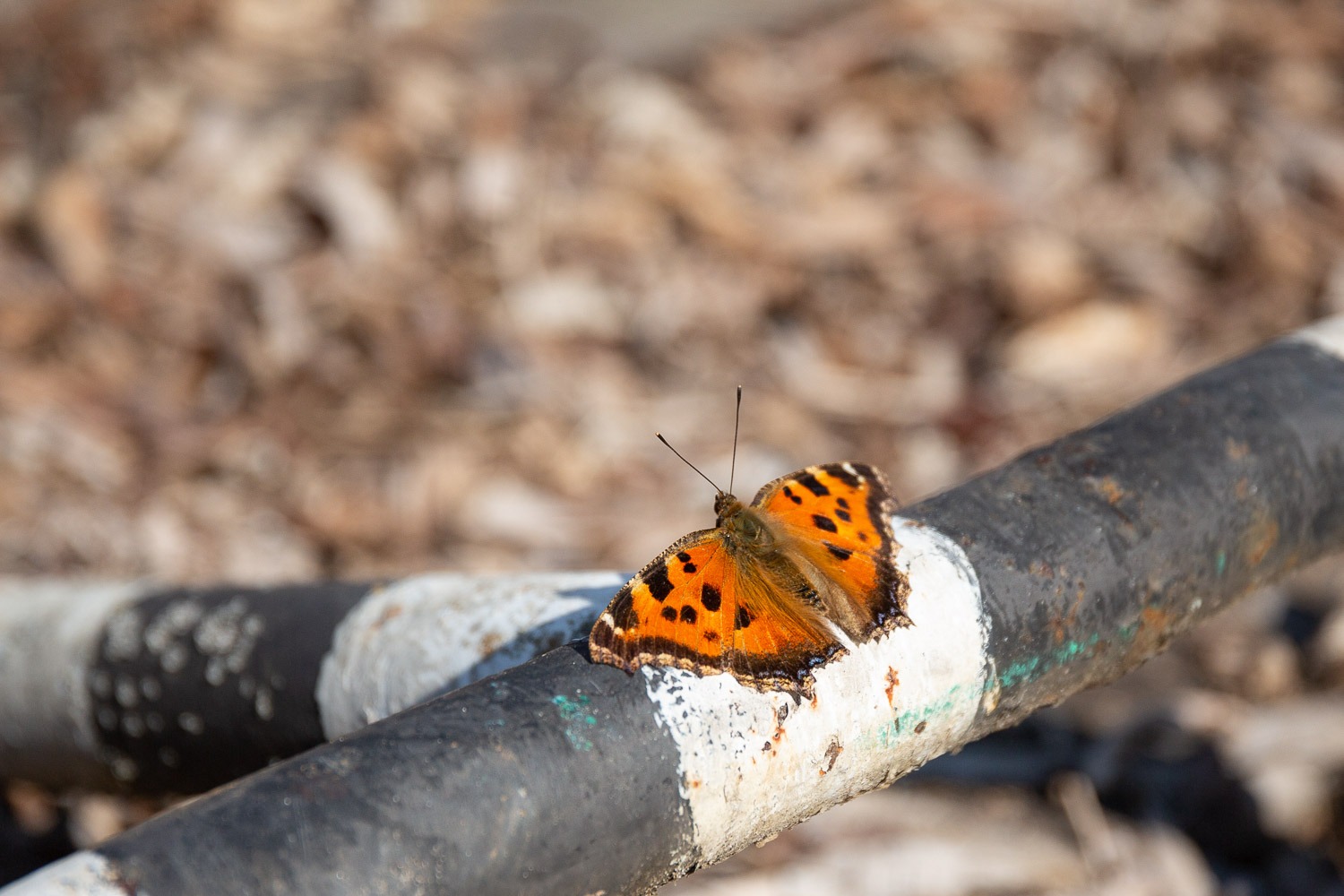Wildlife in the Chornobyl Exclusion Zone
Amid the debris and disaster of the Chornobyl Nuclear Power Plant, butterflies, flowers and insects add a splash of colour. Despite the devastation in the area wildlife exists and some species are thriving even in Pripyat City. The mammals are reclusive, but chance encounters are always possible. The roadsides and between the buildings are a jungle of plants with delicate flowers throughout the year.
Things have changed in Chornobyl since this was written. Hopefully, one-day peace will return and visiting this special region of Ukraine will be possible.

Wildlife living in the Chornobyl Exclusion Zone
As well as the wild dogs roaming the exclusion zone butterflies are flitting around. They seem larger than normal, maybe it is the lack of predators or maybe it is just my imagination. Whatever the reason beautiful yellow Brimstone and orange and black Tortoiseshell butterflies are everywhere in the spring sunshine, dancing together in the centre of Pripyat City. In the buildings, the delicate wings of deceased butterflies merge with the debris of this dangerous landscape. This a real example of beauty dancing amid disaster. This encounter with numerous butterflies was surprising as a study in 2009 found that as radiation levels in the area increased the number of insects decreased. This phenomenon was clearly seen after the Fukushima Nuclear Power Plant accident in 2011, supporting the research fully.


The dense forest, as well as open moorland, surround Pripyat within the exclusion zone and this is the perfect home for wildlife.
Bears and wolves outnumber humans with many not having the usual fear of humans seen in other areas. It is thought that there are over 200 different species of birds living in this unique ecosystem. While the wildlife and plants appear ‘normal’ generations of breeding have resulted in unique genetic mutations. This is subtle, not visible to the passing visitor but has resulted in unique genetic variations.

Flowers and grasses are in abundance in the exclusion zone. Some in Chornobyl are cultivated but most are growing wild. In the winter the buildings are clear, but as the leaves erupt on all the trees and plants the buildings are slowly engulfed in a veil of green. Mistletoe hangs from all the trees in huge bunches fighting with the tree’s own natural foliage.
Przewalski’s horses were released into the Exclusion Zone in the late 1990s to try and allow the species to continue in the semi-wilderness that the zone was becoming. The original horses thrived in the environment and the herd is continuing to grow. These are believed to be the only species of purebred wild horses remaining.

Photography Notes
Wildlife within the Chornobyl Exclusion Zone is everywhere if you keep your eyes open. It is strangely quiet in places, bird song is missing from the background noise of the landscape at times, especially in the middle of the day. However, insects and mammals are all around at all times of the day.
Look for smaller encounters here. The mammals will be hidden away during the daylight hours when visitors are allowed to visit, however, the butterflies and beetles along with flowers and grasses are visible during the daylight hours of the summer months.
Advice for wildlife encounters in the Exclusion Zone
- Talk to your tour guide before entering the zone to ensure they are aware that you want to see wildlife
- Use your eyes, and look out of the window when travelling
- Think small. Mammals will hide but fire bugs and butterflies are everywhere in the summer months
- Dogs roam free but remember to resist over-petting them as they may be contaminated.
- When you are exploring with your guide look beyond the buildings. Plants are in flower in the most unexpected places.
- If you are like me, from the UK look for mistletoe. Our guide was amazed that all visitors from the UK are fascinated by the abundance of this plant and many spend time totting up the potential value on the streets at Christmas time.
Wildlife to look out for in the Chornobyl Exclusion Zone
- Dogs
- Wolves
- Foxes
- Lynx
- Butterflies
- Firebugs
- Wild boar
- Przewalski’s horses
- Elk